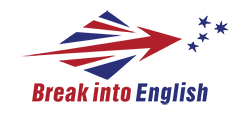Improving learning outcomes within a language program involves a multifaceted approach that combines diverse strategies tailored to the needs of learners. Here are several practical ways to enhance learning within a language program:
Use Authentic Materials
Incorporating real-life materials into language lessons is pivotal for providing learners with authentic language exposure and cultural insights. Utilizing newspapers, movies, podcasts, and social media allows learners to engage with language usage in its natural context, offering exposure to colloquial expressions, idiomatic phrases, and cultural nuances that textbooks may not cover. Newspapers provide current events and diverse writing styles, while movies and podcasts offer auditory comprehension and conversational language practice.
Additionally, social media platforms present informal language usage and contemporary cultural references. By integrating these real-life materials into lessons, educators offer a holistic language learning experience, enabling learners to grasp the language’s practical application and cultural intricacies. This exposure enhances their linguistic competence, fosters cultural understanding, and equips them with the skills needed for effective communication in real-world contexts.

Technology Integration
Harnessing technology within language programs revolutionizes the learning landscape, offering an array of innovative tools that cater to diverse learning styles and preferences. Language learning apps, interactive websites, and multimedia resources serve as dynamic platforms that facilitate self-paced learning while providing varied and engaging experiences.
Language learning apps, such as AppsAnywhere, offer interactive lessons, quizzes, and games, making learning accessible anytime, anywhere. These apps often adapt to learners’ proficiency levels, offering personalized learning pathways.
Online platforms and interactive websites present a plethora of resources including videos, podcasts, forums, and live sessions with native speakers. These platforms foster immersive experiences, allowing learners to practice listening, speaking, reading, and writing skills in real-world contexts.
Multimedia resources encompass a wide range of materials such as videos, audio recordings, and digital textbooks. These resources diversify learning approaches, catering to visual, auditory, and kinesthetic learners, thereby enhancing comprehension and retention.
By integrating these technological tools into language programs, educators provide learners with versatile resources that complement traditional teaching methods. This fusion of technology and language learning not only fosters autonomy but also enables learners to explore and engage with the language at their own pace, ensuring a more interactive, engaging, and effective learning experience.

Cultural Immersion
Cultural immersion serves as a cornerstone in language learning, fostering a deeper understanding of the target language’s essence beyond its linguistic aspects. Organizing events, inviting guest speakers, or arranging field trips are invaluable methods to immerse learners in the cultural context, traditions, and practices associated with the language they are studying.
Events celebrating cultural festivals, language-specific workshops, or interactive sessions featuring art, music, and cuisine serve as windows into the rich tapestry of the target culture. Guest speakers, whether natives or experts, offer firsthand insights, personal narratives, and diverse perspectives, enriching learners’ understanding of cultural nuances.
Field trips to museums, cultural sites, or community centers authentically showcase the heritage and customs intertwined with the language being studied. These experiences offer tangible encounters with traditions, rituals, and everyday practices, allowing learners to absorb the cultural fabric in a more profound and memorable way.
By facilitating such immersive experiences, language programs not only promote cultural appreciation but also enhance linguistic comprehension. Immersion in the target culture encourages learners to embrace cultural diversity, fostering empathy, open-mindedness, and a more comprehensive grasp of the language’s intricacies. Ultimately, these initiatives cultivate well-rounded language learners who can navigate language barriers while appreciating the rich heritage embedded within the language they study.
Personalized Learning
Customizing lessons to cater to various learning styles and individual preferences is integral to effective teaching. Providing diverse learning opportunities enables learners to engage through methods that suit their strengths, be it visual, auditory, kinesthetic, or other styles. By incorporating self-assessment tools, learners gain autonomy in evaluating their progress and setting achievable goals, fostering a sense of ownership in their learning journey. Personalized feedback reinforces their efforts, offering specific guidance for improvement, thereby enhancing motivation and progress.
This tailored approach not only acknowledges individual differences but also empowers learners, encouraging active participation and a deeper investment in their language learning experience. Ultimately, it transforms the learning process into a dynamic and fulfilling endeavor, ensuring that learners feel supported and motivated to achieve their language acquisition objectives.
Language Learning From Anywhere
By integrating these diverse strategies, language programs can establish an immersive and supportive environment conducive to robust learning. This comprehensive approach fosters not only active participation but also cultivates a deeper understanding of cultural nuances. Customizing the learning experience to suit learners’ individual needs ensures that language acquisition becomes an engaging and meaningful journey.
Ultimately, this amalgamation of practical methods empowers learners, instilling confidence and a sense of accomplishment, making language acquisition a fulfilling and lifelong endeavor. Through a blend of interactive activities, technology integration, cultural exposure, and personalized learning, language programs can effectively nurture a vibrant learning ecosystem, enabling learners to thrive and excel in their language acquisition journey.

